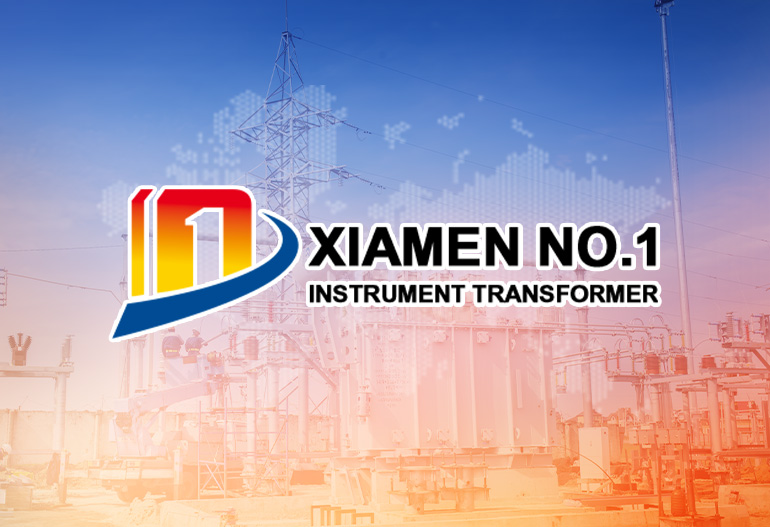
News
Mechanisms of Ratio Error and Phase Error in Current Transformers
Fundamental Principles: Ideal vs. Real Current Transformers
- Ideal CT: A theoretical model with no energy losses. Its primary current (I1) and secondary current (I2) strictly follow the inverse turns ratio: I1/I2=N2/N1, where N1 is the number of primary turns and N2 is the number of secondary turns. Additionally, the secondary current is perfectly in phase with the primary current (no phase shift).
- Real CT: Deviates from the ideal model due to inherent magnetic and electrical losses. These losses introduce both ratio error and phase error, which must be quantified and minimized for accurate operation.
Ratio Error: Definition and Mathematical Expression
Kn is the nominal turns ratio (Kn=N2/N1),
I2 is the actual secondary current,
I1 is the primary current.
Mechanisms of Ratio Error
1. Magnetizing Current (Im)
- Impact on Ratio: The magnetizing current (Im) is a "loss" current that does not contribute to the secondary current. Thus, the primary current can be decomposed as:N1I1=N2I2+N1Im
Rearranging gives:I2=N2N1(I1−Im)
This shows that I2 is smaller than the ideal value (N1I1/N2) by the term (N1/N2)Im, directly introducing a negative ratio error. - Factors Influencing Im:
Core Material: High-permeability materials (e.g., grain-oriented silicon steel) reduce Im by requiring less current to magnetize the core.
Core Geometry: A larger core cross-sectional area lowers flux density (B=Φ/A), reducing Im (since Im is proportional to flux density in the linear region).
Primary Current Level: At low primary currents, the core operates in the non-linear part of the magnetization curve, increasing Im and worsening ratio error.
2. Core Losses: Hysteresis and Eddy Current Losses
- Hysteresis Loss: Occurs due to the energy required to reverse the magnetic domains in the core material as the flux alternates. It is proportional to the area of the hysteresis loop and the frequency of the alternating current.
Effect on Ratio Error: Hysteresis loss requires an additional component of primary current (Ih) to sustain the energy loss. This current does not contribute to the secondary current, increasing the discrepancy between I1 and KnI2.
- Eddy Current Loss: Caused by induced currents circulating within the core material (due to Faraday’s Law), which dissipate energy as heat. Eddy current loss is minimized by using laminated cores (insulated layers) to reduce current paths.
Effect on Ratio Error: Like hysteresis loss, eddy current loss demands a primary current component (Ie) that is not reflected in the secondary current, exacerbating ratio error.
3. Secondary Burden
Impact on Ratio Error: A higher burden increases the voltage drop across the secondary winding (V2=I2Zb). To maintain this voltage, the core flux must increase (per Faraday’s Law: V2≈4.44fN2Φmax), which requires a larger exciting current (I0). As I0 rises, the ratio error worsens.
4. Core Saturation
Causes: Saturation is triggered by excessive primary current (e.g., during faults) or an overloaded secondary burden (which increases flux demand).
Effect on Ratio Error: In saturation, the core’s permeability drops sharply, causing the exciting current (I0) to increase exponentially. This breaks the linear relationship between I1 and I2, leading to severe ratio error. For example, a CT with a 1000:5 ratio might output only 3A instead of 5A when saturated, resulting in a large negative error.
5. Winding Resistance and Leakage Reactance
Impact: These impedances cause voltage drops in the windings, which must be compensated for by increased flux in the core. This, in turn, increases the exciting current (I0) and introduces small but measurable ratio errors, especially at high frequencies or high currents.
Phase Error: Definition and Mathematical Expression
Mechanisms of Phase Error
1. Phase Relationship Between Exciting Current Components
Magnetizing current (Im): Lags the core flux (Φ) by 90° because it is purely reactive (energy stored in the magnetic field is returned to the circuit each cycle).
Core loss current (Ic): Is in phase with the induced voltage (V2) because it represents real power loss (dissipated as heat), making it resistive.
2. Secondary Burden Impedance
Inductive Burden: If the burden is inductive (Xb>0), the secondary current (I2) lags V2 by θ. This lag, combined with the phase angle of I0, increases the overall phase error between I1 and −I2.
Resistive Burden: A purely resistive burden (Xb=0) minimizes phase shift, reducing phase error.
3. Core Saturation
4. Frequency Variation
Hysteresis loss increases with frequency, altering Ic and its phase.
Eddy current loss increases with the square of frequency, further changing Ic.
Leakage reactance (X1,X2) is proportional to frequency, modifying the voltage drops in the windings.
### Interrelationship Between Ratio Error and Phase Error
An increase in secondary burden raises both I0 (worsening ratio error) and shifts the phase of I2 (worsening phase error).
Core saturation amplifies both errors simultaneously, as the exponential rise in I0 disrupts both magnitude and phase relationships.
Minimizing Errors: Design and Operational Strategies
- High-Performance Core Materials: Grain-oriented silicon steel or amorphous alloys minimize Im and core losses (Ic) due to their high permeability and low hysteresis.
- Optimal Core Design: Larger cross-sectional areas reduce flux density, lowering Im and saturation risk. Laminated cores (with thin insulation) minimize eddy current losses.
- Burden Management: Ensuring the secondary burden stays within the CT’s rated limits (e.g., 5–30 VA) prevents excessive flux and I0 increases.
- Winding Optimization: Thick conductors reduce winding resistance (R1,R2), while tight winding configurations minimize leakage reactance (X1,X2).
- Accuracy Classes: CTs are rated for specific accuracy classes (e.g., Class 0.1 for precision metering, Class 5P for protection). These classes define maximum allowable ratio and phase errors under rated conditions. For example, a Class 0.5 CT has a maximum ratio error of ±0.5% and phase error of ±20 minutes at rated current.
Conclusion

XUJIA
I graduated from the University of Electronic Science and Technology, majoring in electric power engineering, proficient in high-voltage and low-voltage power transmission and transformation, smart grid and new energy grid-connected technology applications. With twenty years of experience in the electric power industry, I have rich experience in electric power design and construction inspection, and welcome technical discussions.

